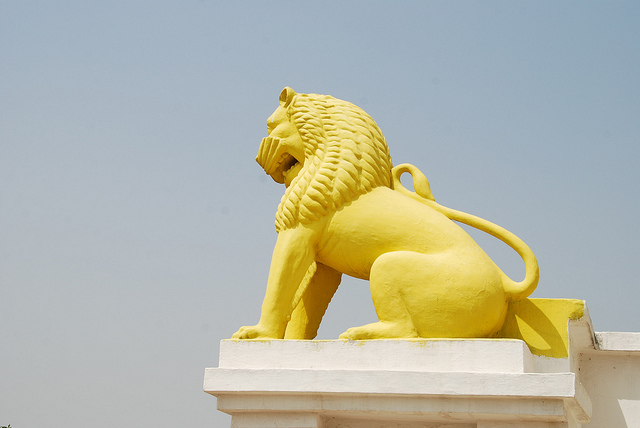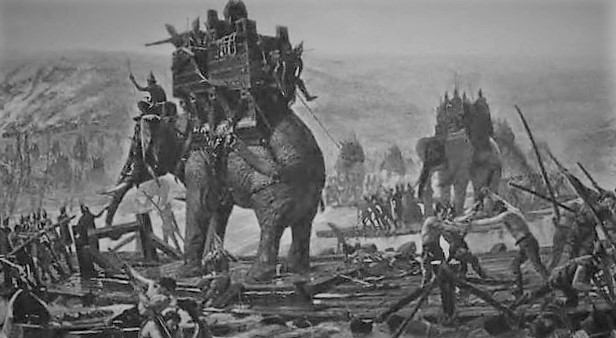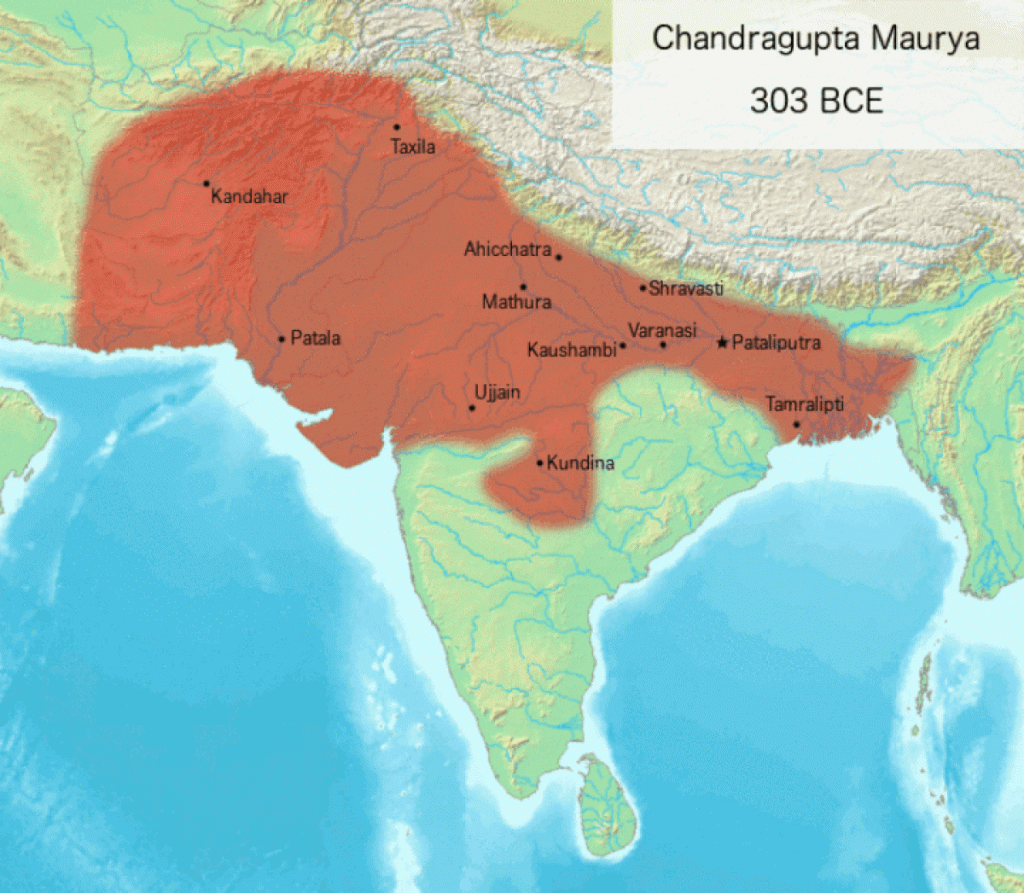The facets of war look destructive often accompanied by violence and peace breaking. Although the victorious one enjoys the dominance over the defeated one, capturing territories of the later, which is the sole purpose of a war, but the losses of lives and materials cost both the sides a huge loss. Our country has witnessed several wars which rewrote the history, changed the structural and traditional system of the nation completely. One of such wars that took place on the soil of India, famously known as The Kalinga War, rebuilt its periphery, turned a cruel heart into a benevolent ruler, spread the message of love and peace in the whole world.
While flipping the dark side of Kalinga War, one can see blood, killing of lakhs of soldiers and can hear the morose sound of the subjects of Kalinga and Magadha, the other side of the war depicts the courage, war skills and spread of a religion such as Buddhism for the establishment of peace and prosperity. Developed from all the prospects of a state, Kalinga in that time of history was at its peak. Mauryan Emperor Ashoka had a critical wish to conquer the state rich in resources. It was not so easy. That’s why the war brought so much wreck.
Ashoka conteplates death on the battlefield
Stone relief on Dhauli Stupa
Imagine a war in which around 2 lakh soldiers get into the conflict with cavalry and arms. The consequence was even bloodied but it transformed King Ashoka and his life. The only war in the history of Odisha ( we can say ) that triggered the strings of peace in the heart of a ruler who thought war to be the only way to conquer the world. Although it started from violence, it ended with peace keeping and finally turned into a way of conveying the message of proclivity.
Reasons Behind The War
As many causes of the war can be implicated from the source of history including famous texts of Kautilya and Megasthenes to the rock edicts of Ashoka. The Kalinga War broke out in 261 B.C., at a time when Magadha under the Mauryan Empire was a powerful kingdom. The reasons behind the war can be any of the following.

Threats from a Powerful Neighbour
Magadha in those times acted like the centre of India as under the Nandas and Mauryans it surged as the most powerful. The existence of Kalinga as a prosperous and stronger kingdom was intolerable by the Magadha Empire. A centre of both economic and political prosperity, Kalinga or Utkala was a source of skilled artists as well as a home to port trade and navy power.
The greed to conquer such a state led Ashoka to declare a war against Kalinga. Ashoka’s grandfather, Chandragupta Maurya also tried but remained unsuccessful. If Kalinga was added to Magadha, it would become more powerful than ever. This perspective of the Mauryan Empire tilted his sword towards Kalinga.
Chandashoka or black Ashoka as was known at that time, Emperor Ashoka had an imperialistic design in his mind. The stretch of Magadha empire from Himalayas in the north to Mysore in the south and from the Kabul valley in the
north-west to Bengal in the east, provoked the King to add the independent kingdom of Kalinga into his territories.
Naga’s stealing of Ashoka’s Jewels
Lama Taranath,a Tibetan author describes the cause of the Kalinga War as the stealing of jewels of Ashoka by the Nagas.
Nagas were the seafaring people of Kalinga who mischievously stole the Magadhan King’s jewels and to take revenge, Ashoka invaded Kalinga.
Karuvaki’s Story
Another legend behind the Kalinga War leads to a strange story. Deeply infatuated by the beauty of Karivaki, a daughter of a fishermen from Kalinga, Ashoka wanted to marry her. But she was already taken by the crown prince of Kalinga. To conquer, Ashoka invaded Kalinga. Although history states Ashoka had a queen named Karuvaki and even a son from her, this particular reason for a war seems absurd. ,
Religious Factor
The sources of History reveal that Kalinga was under the influence of Buddhism, not Brahanism at that time. Originally, a Shaiva in religion, Ashoka wanted to teach a lesson to the Buddhists for spreading their religion in the state. So, this is counted as a factor of the war. However, this is a controversial issue.
Kalinga War

Details Of The War
As per the details of Megasthenes’s Indica, the Kalinga War that took place in 261 BC was one of the biggest wars in the history of Odisha and India. It is accounted that The Magadhan army led by Ashoka, marched ahead with his cavalry, war elephants and infantry where it collided with the great army of Kalinga at the Daya river near Dhauli. This makes a significant place for Odisha as the river lies on the soil of the state. The inscriptions of Dhauligiri also convey the same.
The Consequences
The state of Odisha (known as Kalinga at that time) which included parts of Andhrapradesh in its territory, witnessed the scamp of such an intense war like the Kalinga war. Though it had different impacts on different lives, the war resulted in both constructive and destructive consequences.
Man and Material Damage
Kalinga lost around 1.5 lakhs of soldiers from its side whereas the materials of the states were ruined. Many others got injured and there was no exact count of the drop of blood the war fled down.
Magadha annexed Kalinga and it became a part of the former as the fifth province. Invasion of Kalinga made Ashoka more eligible as a ruler and he administered his kingdom with more responsibility. A state like Kalinga rich and prosperous in every aspect added value to the Magadha Empire.

Chandashoka Became Dharmashoka
The biggest outcome of the war that turned the topic from ‘hatred and cruel hearted’ to a ‘pure soul of soft heart’ is what tells the glory of the war. Outburst by the massive destruction and extreme violence of the war, Ashoka cried out of his heart. His heart changed and he preferred peace over war.
Ashoka later became the biggest spreader of Buddhism. He patronised Buddhism and sent many of his relatives in and out the country to spread Buddhism to establish peace and happiness.
How Odisha Witnessed the Kalinga War?
Dhauli Giri hills of Odisha, a major tourist spot of the state attempts to recall the mega war of history. The 261 BC war took place near Dhauli and standing on the Dhauli hills, one can look at the place imagining the picture of the war. History states no King was there from Kalinga at the time of the war but from some references , Maha Padmanabha is said to be leading the war for Kalinga from the front during the war. History always remembers Odisha because of the occurrence of such a war where peace followed war in a prolific manner.
Conclusion
The course of history of Odisha changed after the Kalinga war. Not only the state gained a civilized administration but was also equipped with some permanent legacies. There were many reforms in the feudal state with social uplifts and political solicitude. After Ashoka patronized Buddhism,he adored an affectionate attitude towards his subjects. Projects were undertaken for the welfare of the state. Ashoka also introduced Mauryan art and culture to Odisha. Therefore, the Kalinga war is regarded as the sheet anchor in the history of Odisha.
